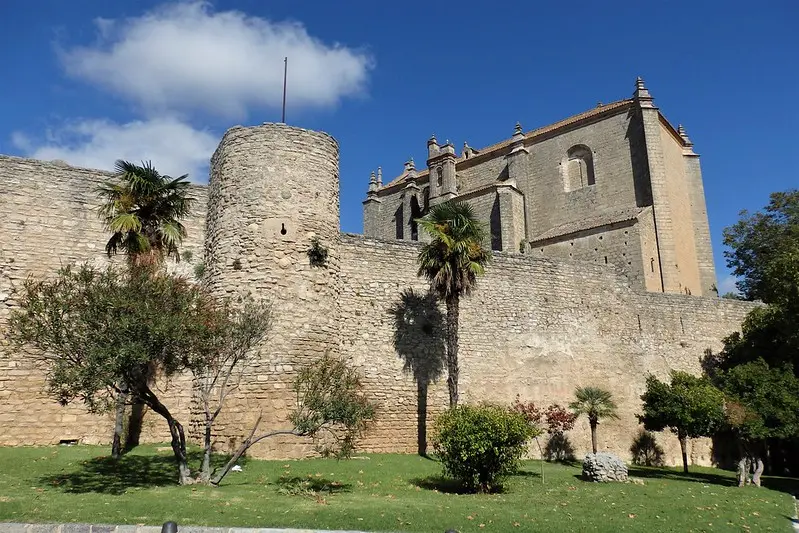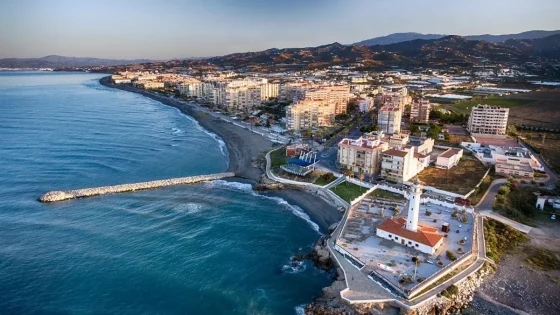
Ronda is an Andalusian town located in the province of Málaga that has a great history and a special charm. Its picturesque streets, the Tajo de Ronda, and the Plaza de Toros are some of the most emblematic places in the city. This town has everything to be your next destination where you will live unforgettable experiences.
Table of Contents
History of Ronda
Certain cave paintings in the Cueva de la Pileta in Benaoján and vestiges found in Ronda confirm that its history dates back to the Neolithic era. After several settlements of different cultures, the town went through very diverse periods until the Roman era, when they called it Laurus.
Ronda had its greatest development and splendor in the 9th century during the Muslim era, where it became an important political and economic center. Centuries later, French troops invaded the town, which caused a war in the sierra and led to banditry.
During the War of Independence and the Spanish Civil War, the town witnessed important battles and historical events. Nowadays, Ronda is a tourist city with a rich historical and cultural heritage that attracts visitors from all over the world.
What to see and do in Ronda
The town has a large number of tourist attractions that are worth visiting. Some of the main places you can’t miss are:
The Bullring
The Ronda bullring is one of the oldest in Spain and a place of great historical importance for the city. It was built in 1573 and has an impressive design.

Various bullfighting shows and horse hitches take place here. It also has a bookstore where you can find a variety of products related to horseback riding and bullfighting.
- Address: C. Virgen de la Paz, 15, 29400 Ronda, Málaga
- Hours: From 10:00 am to 7:00 pm
- Price: 9 euros
- Phone: 952 874 132
The House of the Moorish King
The 14th-century Mudejar-style fortress-house has an interesting history and a unique design. During the Reconquest, it was a key structure for the defense of the city by the Muslims.

Years later, it was remodeled and now has a Muslim-era water mine. Inside, you will find the house belonging to the Duchess of Parcent from the 20th century and a spectacular French-style garden.
This visit is not suitable for people with reduced mobility or in poor physical condition as it has stairs and structures in poor condition due to its age.
From there you can see natural landscapes such as the Sierra de las Nieves Natural Park and the Peñón de los Enamorados, among others. Near the house, the descent to the Guadalevín River and a small pier for walking in the area was enabled.
The Tajo de Ronda
The Tajo de Ronda is a bridge in a natural gorge of the Guadalevín River that separates the historic center of the city from the modern district. Built between 1751 and 1793, this architecture has a total height of 90 meters.

From there, you can contemplate impressive views of the Andalusian landscape. You also have the possibility of passing under the bridge and seeing the views from inside the gorge, which is one of the favorite routes of nature and hiking lovers.
Arab Baths
You can also visit the Arab Baths, archaeological sites that originated in the Muslim era and date back to the 13th and 14th centuries. This thermal complex has three bathing rooms in perfect state of preservation, allowing you to discover this emblematic construction from that relevant era.
- Address: Calle Molino de Alarcón, s/n, 29400 Ronda, Málaga
- Opening Hours: From 10:00h to 18:00h
- Price: From 3 euros
- Phone: 951 15 42 97
Churches and Religious Buildings
Ronda also has numerous churches and sanctuaries. Notable buildings include the Church of Charity, the Church of the Holy Spirit, and the Convent of Santo Domingo, all of which were built by the Catholic Monarchs.

These are just a few of the many places to visit in Ronda. However, the best option is to walk through its streets and discover all the corners that this unique town offers.
Nature and Hiking
There are several hiking trails to enjoy nature in Ronda and its surroundings. Some of the most popular ones are:
The Cueva del Gato route: this 8-kilometer route leads to the impressive Cueva del Gato, a natural cave with a waterfall and an interior lake. The path runs along the Gaduares River until reaching the natural monument of the Cueva del Gato. Along the way, you will find several pools to cool off.
It is forbidden to enter the cave without prior authorization. We recommend wearing shoes with grip for the more slippery areas.
The Tajo de Ronda route: this 9-kilometer route offers stunning views of the city and its famous New Bridge. It is a circular route that starts with a walk in the countryside and ends in the city center.

The Molinos del Tajo route: located on the outskirts of the town, this circular route is about 10 kilometers long with medium difficulty. The route starts at the viewpoints of the Hoya del Tajo where you can walk through the pine forests, fruit trees, and the ruins of the mills of Tajo.
Popular Festivals and Gastronomy
Ronda Romántica
Transport yourself to the past with this great event that the town offers to its visitors and locals. This festivity in Ronda makes a historical recreation that recalls the romantic era of the first half of the 19th century, which was when the town had its greatest splendor.
This year on May 13th, Ronda will show off its streets with an event that brings together attire from the time period, carriage parades, equestrian encounters, theatrical performances, and different period vendors.

Grand Singing Festivals
Ronda celebrates three important music festivals throughout the year in the heart of the old town, although the most notable is the Grand Singing Festival which refers to flamenco.
In August, you can enjoy the most outstanding flamenco singers and dancers on the Spanish music scene. If you have the opportunity to visit this corner of the Costa del Sol, you can’t miss its folkloric art.
Regarding the gastronomy of Ronda, it is rich and varied, with typical Andalusian dishes such as rabo de toro, gazpacho, or sopa de ajo. In addition, you can enjoy local wines from the region.
There is an attractive gastronomic offer of restaurants in Ronda, known by all citizens of the province.
For dessert, we suggest trying the famous yemas del Tajo. This typical sweet from the area originated from an ancient monastery in Ronda and can be found in the town’s pastry shops.
How to Get to Ronda
How to get to Ronda Airport
Ronda does not have its own airport, so if you arrive from outside, the most convenient option is to take a flight to Malaga Airport, given its proximity. From there, you have the option of taking a bus or renting a car to get to Ronda.
How to Get There by Public Transport
To get to Ronda, you can take the direct bus Avanza L-304 towards Ronda from the bus station. It takes about 3 hours to arrive, and the ticket price is around 14 euros.
If you prefer to arrive by train, from the Málaga María Zambrano station, you can take the train towards Antequera – Santa Ana and then take the route towards Algeciras (Cádiz) and get off at the Ronda stop. The ticket price is about 14 euros, and the journey takes around 3 hours.
How to Get There by Car
The best option is to drive, you can get to Ronda from Malaga airport through the A-367 towards A-7278 Teba/Ronda, then follow the signs to Ronda. It takes about an hour and a half to arrive.
When visiting Ronda, we recommend hiring a cheap car at Malaga airport to enjoy the freedom of exploring this region of Andalusia at your own pace and visiting neighboring towns such as Setenil de las Bodegas, Júzcar, or Ardales.
Map of Ronda
Below you will find a map with the main places to visit in Ronda, so you can plan your trip in the best possible way.
Relevant information
Best time of year to visit: spring and summer.
Can’t miss: stroll through its many viewpoints with views.
Nearby places to eat: Ronda has a great variety of places to eat, we recommend Mesón El Sacristán, Restaurante El Patio or La Pilastra del Torero. The latter two have terraces with wonderful views of the mountains.
We hope this information has been useful and that you are encouraged to visit Ronda. For more information about the city, you can check the website of the Ronda City Council: https://ayuntamientoronda.es/



